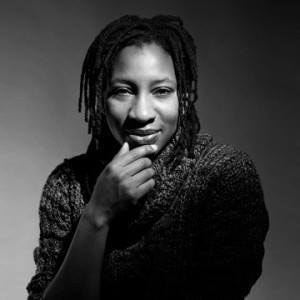An Interview With
Photographer and Artist
Nicole Small
by Catalin CROITORU
Fine Art Portrait Photographer Specializing in Black and White Portraiture
Nicole Small on Lens Magazine #39. Special Interview
My journey into photography all started out in the world of fashion. Yet, as time passed, I discovered that I could not really believe in or empathize with the customs and idioms of fashion photography. I was disturbed by what “comes through” in fashion along with the constant false reminders of how “perfection” and “beauty” should be which has broken down our levels of self-esteem and self-acceptance.
I realized how powerful portrait photography could be and I wanted more out of it. I wanted something real and meaningful to emerge when I worked with a subject and did not want to cover up or take away from what I already saw as complete.Whether it is a classic standard portrait or a creative one, my goal is to bring out a real and honest you. Everybody is unique and I want to bring that part of you to life in your personal photographs.
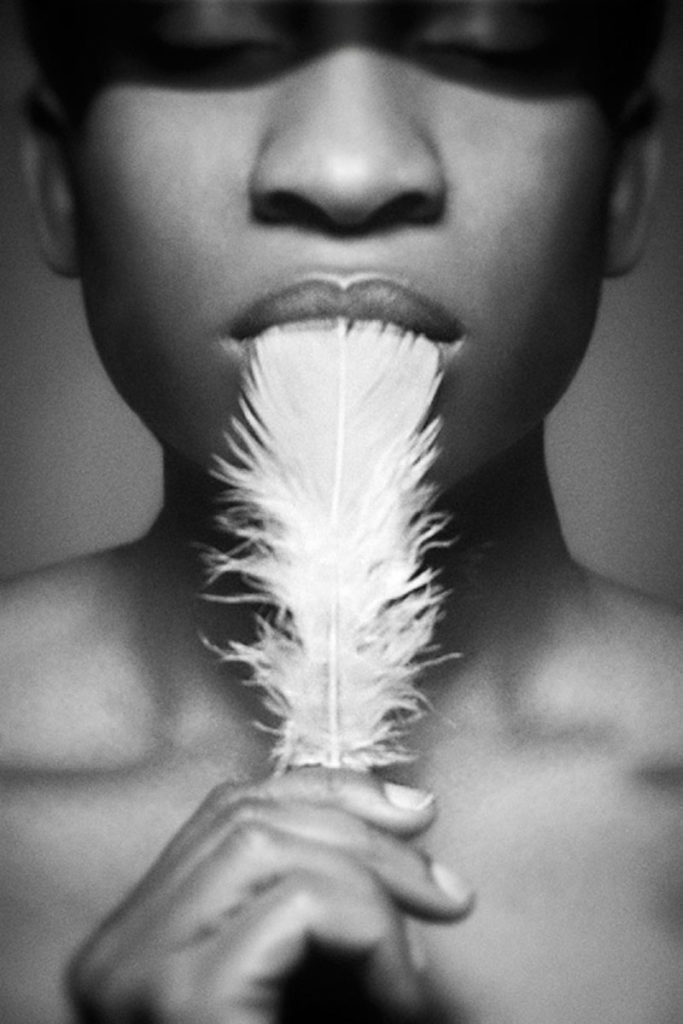
Copyrights To Nicole Small © All Rights Reserved
Lens Magazine: It is a pleasure to have you here, Nicole! Thank you for taking time to talk to us.
Thank you for the invitation! I am really honored.
LM: You live in Montreal, you picture people from Montreal, your studio is in Montreal; what makes this city so special for your photographic work?
That is a very good question indeed. I was born in Montreal and so Montreal has been my comfort zone. The place where everything began and where everything has happened and is happening.
I would say in the last few years, my mind has expanded to the out of bounds of Montreal. Living here in Montreal as an artist and photographer is not what it used to be. Response to my work resides away from home, which is a direction I will soon need to take.
Montreal has been great when I was learning, developing and growing, but now I have to move on to a different place.
LM: Your daily work is in a hospital, but your passion is about photography. How and when all it started? How is it possible that two different fields to make you so special?
It is crazy being in two completely different worlds, but it has helped me to balance things out at the same time and in turn has driven me to want to excel, do and try different things. I think it is so important no matter how much dedication you have on any idea or project to space yourself away from it, otherwise you are calling for a burn out and this I know from experience.
I have found myself at times being able to think more clearly on ideas that I have had brewing in my head, or realize solutions to projects when I am at my “other” job, (*the hospital*). There is a push that comes about that I like with having that separation from time to time and I have learnt to maximize and take things in stride. Time has become precious.
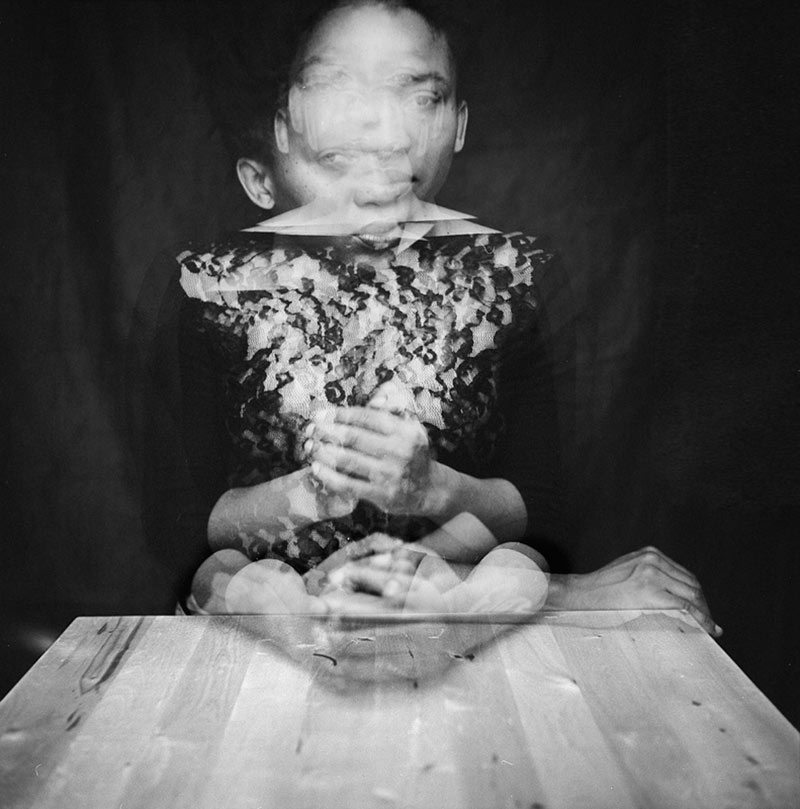
Copyrights To Nicole Small © All Rights Reserved
LM: Your career in the world of images has “two sides”, like a coin: the digital one, and the film one. Please tell us first about the time you were taking pictures with the help of a camera sensor…
It was very much hit and miss in the beginning because I did not really understand the technical part of using a camera. All I knew was that this was something I wanted to do and learn more about. The idea of being able to set a look and feel to a particular subject or scene fascinated me. My basic knowledge improved over time and once I understood how I could manipulate light and see light, that is when everything started. I began to look deeper into what and how I wanted to photograph. It was that simple to me at the time. As now comparing this to working with film… It is a whole new ball game. Many say this and it is a truth, working with film slows you down and it has pushed me to being more observant of what is happening around me and to what is directly in front of me. Composition has become more important than ever and I love what working with film has opened my eyes to and taught me.
LM: How did you decide to “switch” from high-tech cameras to the vintage ones, with film? What was that turning point of your career?
I honestly became very bored of the digital workflow, I felt that there had to be something more than just what it was. I was in a need to find something else and so I began researching extensively online and not only for photographers but in reference to the history of photography. This is what led me to open my eyes to a different direction and to the possibilities that I thought were no longer an option, so I ended up going back in time.
I would say the discovery of it is still possible to work with film and alternative processes was what changed everything for me creatively and artistically.
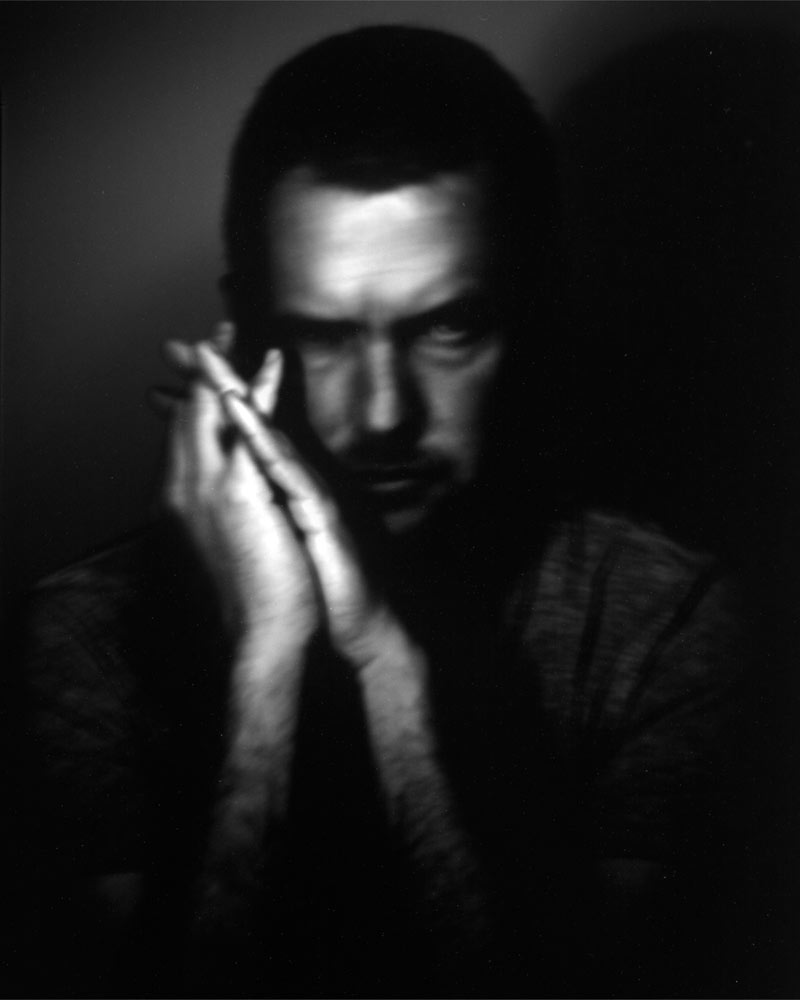
Pinhole Portrait of Michel
Copyrights To Nicole Small © All Rights Reserved
LM: How it looks a “photographic day” for you, Nicole?
My days vary all the time. Sometimes I can be set to work in a studio by testing out light, cameras and film. Other days can be just taking a drive to new places and photographing what is around me. Some may say I am obsessed and they are probably right! I eat, breath and sleep photography and each and every time it is something new and different.
LM: Are there artists that have inspired you and your work?
I am inspired by quite a few photographers and in different ways (in no particular order): Irving Penn, Mary Ellen Mark, Martin Schoeller, Anton Corbijn, Herb Ritts… Just a few mentioned here!
LM: What do you feel the moment you are pressing the shutter release? What do you want to show to the world through your images? What are you “hunting”?
I look for that pivotal moment where they let go. There is always a moment where you can see real emotion and movement come through. The shoulders lower, the eyes get a twinkle, (kind of hard to explain), the body moves differently and this moment can happen on and off for short periods within a session.. Or it explodes and shines through from beginning to end. What I look for is that real exchange of communication and that does not only mean between the subject and me, it also includes the exchange within themselves. These are the moments when they let go and forget the studio setup, the camera and the need to act unlike themselves.
LM: You were steady in your work with the photo cameras for more than seven years; what were the “downs” and the “heights” of this freelance career? What was the most challenging moment of all?
As far as the downs go, it is such a disappointment when you agree to work collaboratively with another artist, organization or what have you and at that offering your services for free, to then realize in the end that nothing has been honored at what was agreed upon and that is not being credited for any of the final work. More and more I find that it is no longer about collaborating and creating TOGETHER, it has become just about getting the content needed in the way it is wanted and that is the end of that.
Another down has been trying to get projects and ideas realized and completed, but this is something to expect!
The heights throughout those years has been all the great people I have been so lucky to meet and to photograph. The hair, makeup and stylists I have gotten to work with and grow with when I was just starting out. The people and fans, I have gotten to know and connect with from all over the world and who have shown great respect and support.
I cannot forget to add my turn to photographing with film. This has been a high in my photographic career and I am loving every moment of it.
LM: Let’s pretend you’re not a photographer; what would have been the path of your life that you’d have chosen instead?
I probably would have been a veterinarian or a marine biologist. I have always had a strong love for animals from a very young age. Growing up I have always lived with cats and unfortunately recently lost my cat, “Thundy” of thirteen years.
If I lived in a country setting, I would have dogs and lots of them. Boxers, Great Danes and/or Greyhounds. RRRUFF!
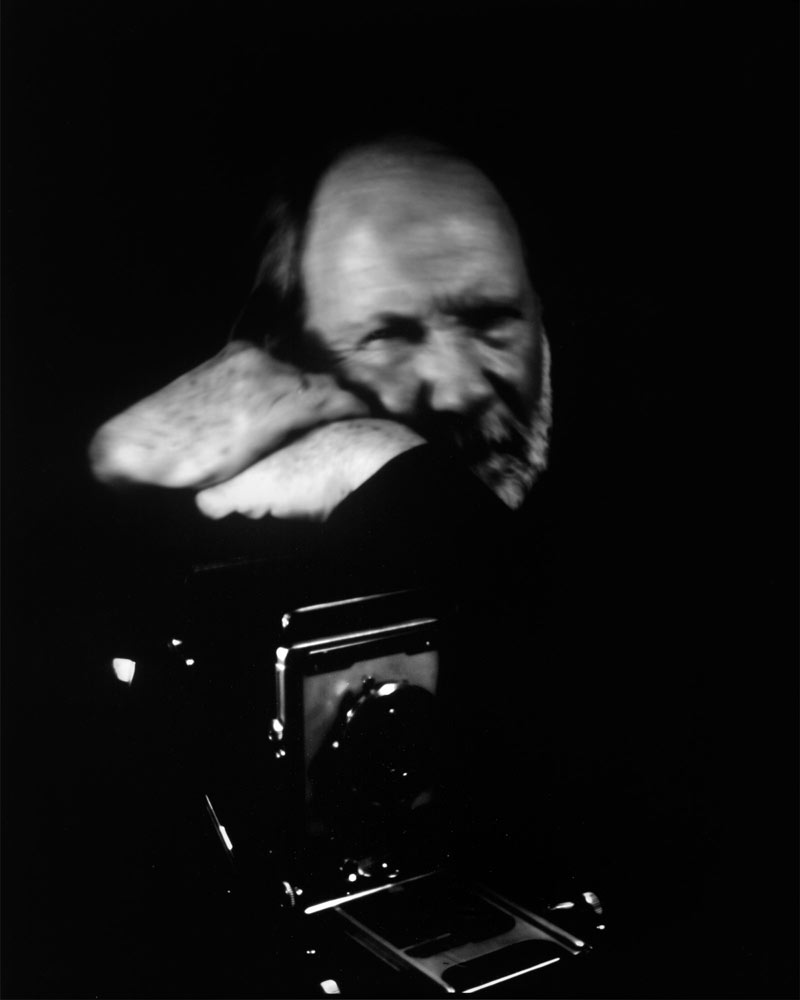
Pinhole Portrait of Randy
Copyrights To Nicole Small © All Rights Reserved
LM: Everybody has secrets; tell us about a secret of yours, you have never spoken before with anyone else…
I actually went through an artistic/creative breakdown where I almost gave up on my passion and love of photographing people. I could not understand how I could not, hate saying the word, convince others that I am worth photographing them. Today, I do not care for what can or cannot happen because I believe in my values and vision as an artist and as they say, there is a time for everything. Until that time comes, I have chosen to stay real to myself and approach as a photographer and artist.
I love what I do too much to let it go and however my emotional energy decides to blow, that is where I will creatively be.
It is no secret… I hate thinking mainstream and applying what I have learnt in a mainstream way and I hate being repetitive with the look of my work. I do not believe in transformation on the outside, BUT in the inside, where it matters most. I do not believe women AND/OR men need to have a full styling team to change their path of confidence or to feel beautiful.
I cannot see photographing everyone under the same light set up because we are not all the same. I do not see people as an assembly line, nor do I see myself as an assembly worker. It is just impossible.
Regardless of where the chips may fall… I will not stop doing what I do and loving what I love.
LM: What are your upcoming projects? Did you plan any exhibits in the near future?
I have several projects that are in the works, but what I have really been focused on is a pinhole portrait project, which started out about a year ago and was inspired by my own self portraits done using a pinhole camera. This was actually during a time where I was at an emotional stand still with photography.
I have presented this project in the past as a creative collaboration with other fellow Montreal artists, but to my surprise, it did not get the attention that I thought it would.
I thought it would be a successful project, especially since my target was other fellow artists. It is definitely not something everyone is doing or even willing to do, but the end results….. “One of a kind”- a main objective.
I love pinhole photography because it is experimental, challenging, mysterious and unique.
If all sits into place, I plan to exhibit some of this work for my personal art exhibit in the fall of next year.
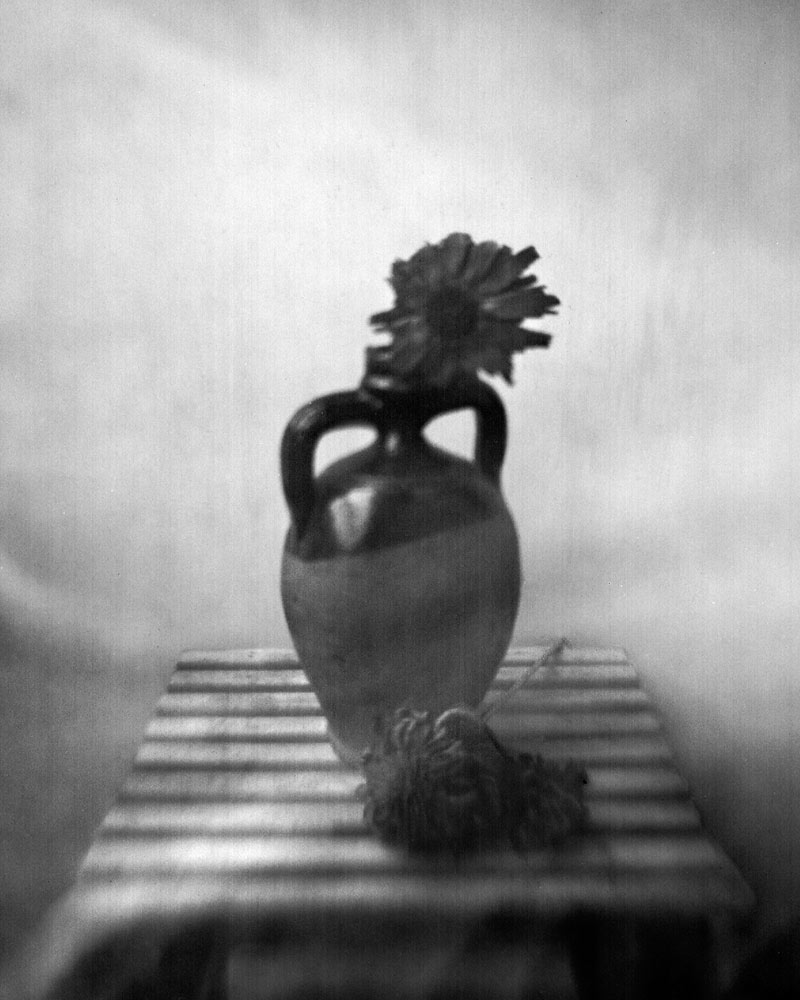
Still Life. Copyrights To Nicole Small © All Rights Reserved. Lens Magazine
LM: If you’d mentor a wannabe photographer, what you will say and teach him?
The very first thing I would say is to learn the basics of light. A book that I found very helpful when I started out was a book called, “Light, Science and Magic”. It is somewhat of a textbook style approach, but a great resource for any beginner.
I would also say learn to see the light. Learn to see how the relationship of light and shadow can play together in different forms and with different subject matter. See and learn what it is YOU like and don’t like as an artist and apply them to your own artistic visions.
Follow your eye, feeling and heart and try not to take too much of what is out there, make your own unique approaches and most of all experiment any chance you get.
LM: What gear do you use and where do you process your films and negatives?
I have several cameras ranging from 35mm to large format. I will say that mostly for road trips or Walkabouts, I will always bring my 35mm Minolta XD camera and Yashica D. Both of these cameras are my work horses out in the field. From time to time, I will use the Mamiya C330 but l replaced this choice with large format, the “Graflex Crown Graphic”.
In the beginning when I started out photographing with film, I had my films processed in Montreal at a camera shop and photo lab by the name of “Photo Service”. I did experiment with a few rolls with another lab by the name of, “Borealis” which is also located in Montreal.
About a year after I started with this new venture of working with film, I started to process my own film. I did not know at the time that this was possible. I always felt you needed a special room and or equipment in order to achieve this that perhaps was something not attainable. Once I started processing my own film,
I have never gone back to a lab.
Read the full Interview on Lens Magazine Issue #39

